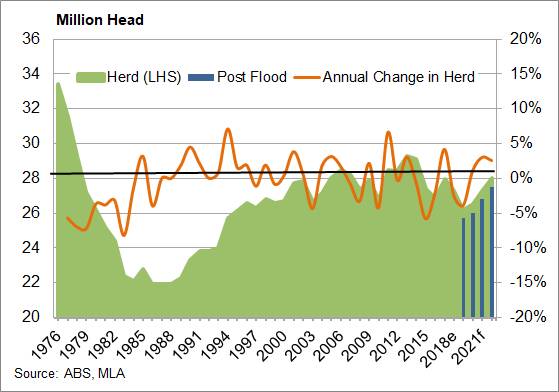
Devastating floods that have afflicted far north-west Queensland in recent weeks have somewhat abated, but we’re still hearing stories of cattle dying.
The figure that most seem to be settling on for losses is around 500,000 head.
At the end of June 2017, the Australian Bureau of Statistics put the number of cattle in the southern Gulf, north Queensland dry tropics and the northern Gulf at around 3.15 million head.
Given the dry weather we’ve seen for much of the last 18 months, the number at the start of this year was likely to be lower.
If we use the 3.15 million head number, at a local scale nearly 16 per cent of the cattle herd has been lost.
For Queensland, losses account for 5 per cent of the herd, while on a national scale it’s 2 per cent.
The herd was already headed for a 23 year low, but now the additional cattle exiting the herd will see 5.7 per cent lost to hit 25.7 million head. The fall will almost be the same as the 2015 decline, although we haven’t had a herd under 26 million head since 1994.

The area affected by the floods supplies both slaughter and live export markets, but in what proportion is difficult to tell.
The loss of cattle will no doubt impact both markets. It’s unreasonable to expect there will be 500,000 fewer cattle slaughtered or exported this year or the years after.
Regardless, there is a good chance that total cattle supply for slaughter and live export will fall below the recent lows of 2015.
What does it mean?
The disaster which has hit the producers of north-west Queensland is going to add impetus to what were already going to be strong prices, once the drought breaks.
We are likely to see Queensland prices move to a strong premium to those in the south, as it becomes the major demand centre for slaughter, live export and breeding cattle. Cattle will surely be flowing north.

